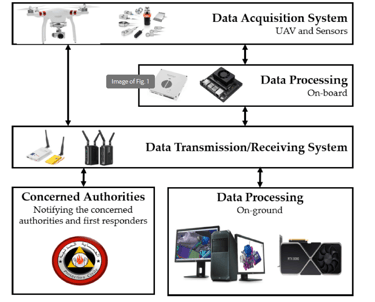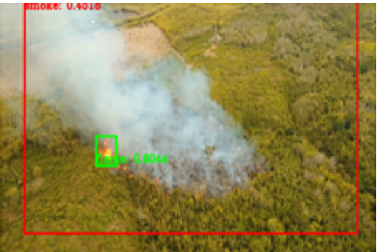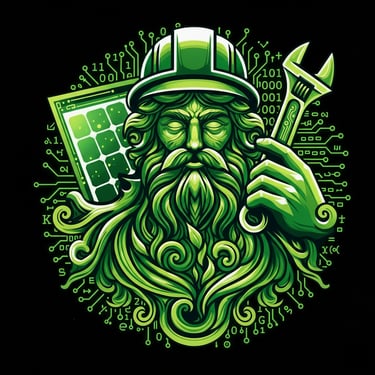Revolutionizing Wildfire Detection: UAVs and Deep Learning Algorithms
DEEP LEARNINGWILDFIRE DETECTION SYSTEMUNMANNED AERIAL VEHICLE


Introduction
Recently, the use of unmanned aerial vehicles (UAVs) harnessed with enhanced deep learning algorithms has improvised the early detection of wildfires. This revolutionary approach not only enhances the speed and accuracy of wildfire detection but also acts as a preemptive function to prevent catastrophic losses. In this blog post, we will discuss the constraints of old-fashioned firefighting systems, the adoption of UAV-based remote sensing technologies, and the significant impact of deep learning algorithms in autonomous wildfire detection processes.
Limitations of Traditional Firefighting Systems
Old-fashioned firefighting systems heavily depend on ground crew inspection, which poses significant constraints in early wildfire detection. Based on a study published by Bouguettaya et al in 2022 in the Elsevier journal, such limitations of these systems include:
The manual inspection process is time-consuming and mainly is not tailored to cover large, complex forested areas in an effective way.
The dependence of ground crew members alone may result in delays in the discovery and mitigation of wildfires, possibly paving the way for the growth of these destructive natural disasters.
In order to address the limitations of traditional firefighting systems and effectively manage the spread of wildfires, scientists must rely on technological innovations from Unmanned Aerial Vehicles (UAVs) and deep learning algorithms.
UAV-Based Remote Sensing Technologies
Unmanned aerial vehicles (UAVs) arose as powerful devices for early wildfire detection, presenting an unrivaled potential in recording high-quality visual data from isolated and unreachable areas. Some of the benefits of using UAV-Based remote sensing technologies for wildfire detection include:
Equipped with optical cameras, UAVs provide crucial data for discovering wildfire smoke and flame in their early stages.
The use of UAVs with optical cameras is a significant benefit for small-size UAVs, making them suitable for cheap forestry applications, cutting the budget for research funds.
Additionally, the high-quality spatial resolution and user-friendliness make UAVs well tailored for object detection from aerial imagery, significantly enhancing the efficiency of wildfire detection efforts, and scaling the ability to detect wildfires at larger forests.
All these benefits of using UAVs help address the limitations of traditional firefighting systems. How does a UAV-based wildfire detection system work? According to the figure below, it functions in the following stages:
First, the UAV is equipped with a sensor and camera that captures videos, images, and wildfire data.
After the UAV is sent to capture the data, the data will be processed on a computer hard drive and is transformed for the next stage.
After the data is transformed, it will be transmitted to an entity that represents a disaster management authority and informs this authority to reduce the spread of the wildfires.


UAV-based remote sensing system flowchart for forest fire detection and concerned authorities’ notifications (Bouguettaya et al, 2022)
Deep Learning Algorithms for Autonomous Wildfire Detection
UAV-based remote sensing methods are shown to be an innovative solution for improvised wildfire detection. But how can we be able to enhance that technology even further and detect wildfires at earlier stages? That is where artificial intelligence and deep learning algorithms come into the scene. The combination of deep learning algorithms with UAV-based visual data has created a new era of autonomous wildfire detection. These enhanced algorithms, mainly Convolutional Neural Networks (CNN), have the ability to automatically compile and filter relevant and strong features from visual data, unlocking precise recognition of wildfire smoke and flame. By mastering the use of deep learning architectures, scientists have achieved remarkable results in complex problems of image processing and computer vision applications, including wildfire detection in densely populated forests with jumbled backgrounds.


Example of object detection operation: Flame and smoke detection (Bouguettaya et al, 2022)
Conclusion
The usage of UAV-based remote sensing technologies and deep learning algorithms represents a highly advanced application to early wildfire detection. By addressing the constraints of traditional firefighting systems and leveraging the power of advanced technologies, scientists and authorities can significantly enhance the speed, precision, and efficiency of wildfire detection processes and plan ahead for risks. This strong connection between UAVs and deep learning algorithms holds an immense promise in safeguarding lives, protecting forest resources, and managing the devastating impact of wildfires.
Subscribe to our newsletter


